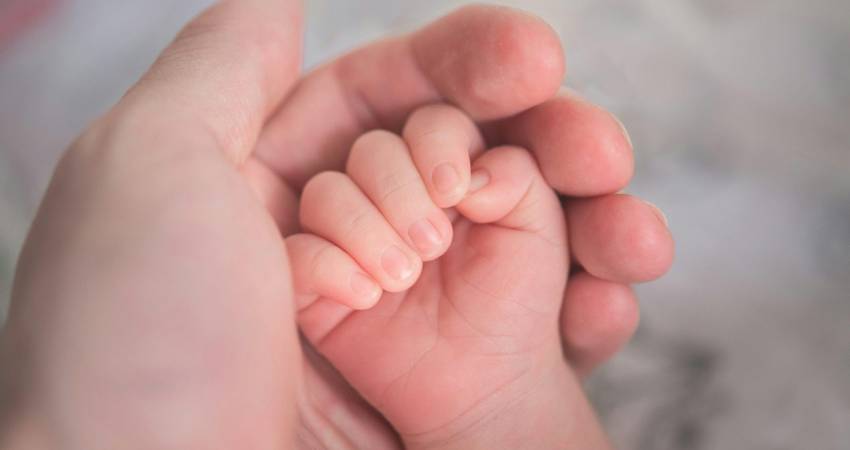
Australian midwife testifies about babies left to die following abortions
An Australian midwife has testified before a parliamentary inquiry that babies are being born alive after abortions who struggle to live for up to five hours as they are left to die.
Louise Adsett, a clinical midwife with 14 years’ experience working in maternity and birth suite units in the Australian state of Queensland, appeared August 19 before a parliamentary hearing concerning the Termination of Pregnancy (Live Births) Amendment Bill 2024.
The bill, introduced by Robbie Katter MP, intended to introduce legal protections for babies born as a result of a termination of pregnancy procedure.
Following the inquiry, Senator Ralph Babet forced a vote in the federal parliament yesterday afternoon on his urgent motion demanding protection for all Australian newborns irrespective of the circumstances of their birth.
However, the motion was defeated with 32 senators voting against it and only 18 senators voting in its favour.
Ms Adsett, who was appearing at the inquiry on behalf of the Australian Christian Lobby, said that at her hospital in Brisbane there has been an increase in the number of ‘social terminations’ “for psychosocial or financial reasons”.
Courageous Queensland midwife Louise Adsett today blew the whistle on Australia's ugly abortion-to-birth laws. How can anyone listen to her first hand accounts of babies gasping for breath while waiting to die after the abortion attempts on their lives? Please don't look away. pic.twitter.com/zu63tkS1Cp
— Lyle Shelton (@LyleShelton) August 19, 2024
“We’ve had babies born alive after terminations from 15 to 22 weeks, born alive, gasping for air, moving and having a palpable heart rate – fighting for their lives as we humans are designed to do,” Ms Adsett said, adding that sometimes babies born alive after an abortion are put into “witches hats and are covered, taken out of the room and die while in that witches hat”.
“This is distressing to many of the midwives as they are unable to provide any medical care for the baby but are limited to providing comfort care only, which is merely wrapping and holding the baby,” Ms Adsett said.
Ms Adsett, who is herself a mother of three, offered the example of a mother who decided to abort her baby at “21-plus weeks’ gestation” and was given the drug misoprostol throughout the day.
“The process took all day, and the baby was only delivered during the early hours of a night shift where skeleton staff was on duty,” Ms Adsett told the inquiry.
“This baby moved vigorously, gasped for breath and had a palpable heart rate to make it clear this baby was alive. It was over 400 grams, so the baby was a good weight.
“The parents of this baby did not desire to see or hold this baby. Midwives and doctors were left holding this little life while they continued to provide care for other women who were birthing and welcoming their babies into the world.
“This baby boy fought for his life for five hours before taking his final breath. This is not an uncommon occurrence,” she said as she fought back tears.
Ms Adsett said that “these babies deserve better,” and that they “deserve to have the same rights that all of us human beings have”.
Gript previously reported on the Irish Government’s review of the operation of the 2018 abortion law, which found that babies are being born alive after abortion and may be denied comfort care after the procedure failed to end their lives.
In discussing palliative care – where comfort care is needed for babies born alive after a late-term abortion – the review noted that some paediatricians and neonatologists do not want to be involved in assisting these babies.
“However, the extent to which they are prepared to become involved is described as differing across settings and differing across the circumstances of the birth, with some not being prepared to offer comfort care where the birth is a result of a termination of pregnancy,” the review stated.
A 2020 paper similarly highlighted conflict between specialists carrying out abortions and neonatologists as a result of a lack of clarity as to who will look after a baby if it was “born alive following an abortion by induction of labour and without feticide”.
Jason Osborne
This article first appeared in Gript and is published here with permission
Featured
- Yes, that hideous celebration of 300 abortions is real
- White Crosses Memorial: Dungarvan once again pays its respects to our aborted babies
- Precious Life welcomes strong stand by Scottish Bishops against 'draconian' Buffer Zones law
- The fury over sex-selective abortion in Britain
- IFPA’s claim ignores HSE statistics on benefit of 3-day wait
- 12 Wonders of Christmas a huge Success
- Campaign to stop EU funding out of state abortions - tell your EU commissioner to vote NO
- Judge recuses himself from case of woman praying in censorship zones for “apparent bias”
- I’m a Celebrity star criticises “sad” UK law that aborts babies with Down Syndrome up to birth
- British actress speaks out on “serious risk” assisted suicide bill has for those with eating disorders
- Caplan’s “Tragic Hysteria of Abortion” discusses the flaws with mainstream Turnaway Study interpretations
- Mother and baby doing well after surgery for mother’s cancer during pregnancy
- Josiah: Abortion Survivor
- Loving the Unborn
- Rally for Life 2025
- Don't assist Suicide 2024


























